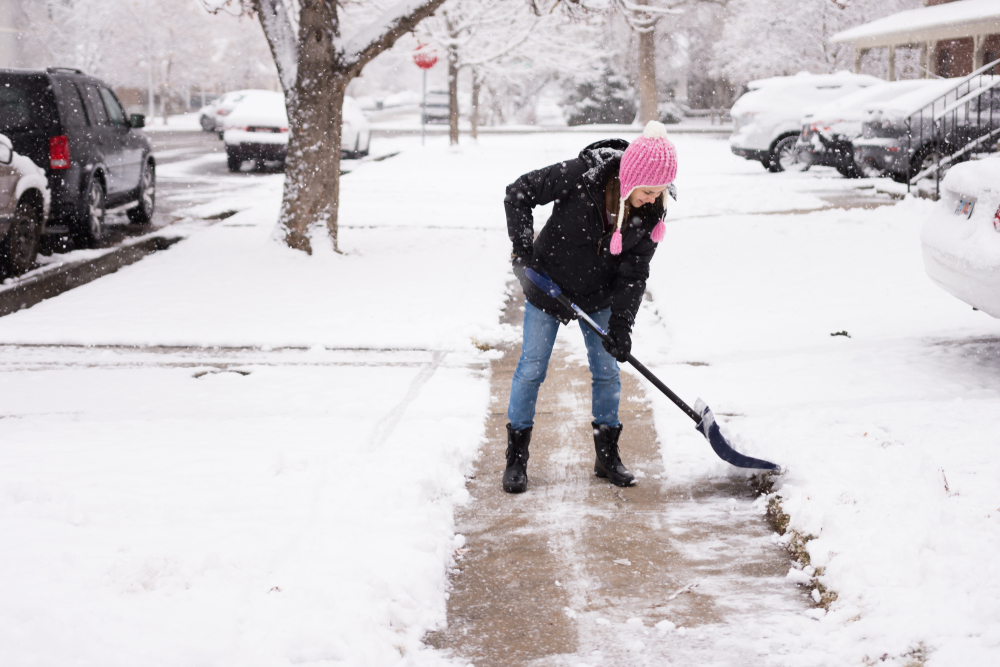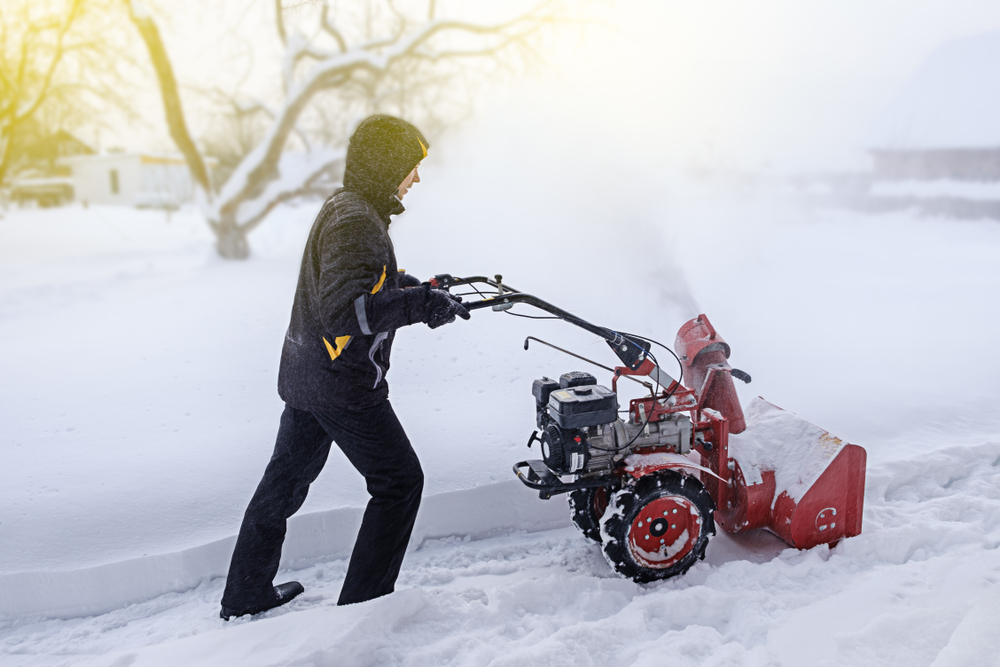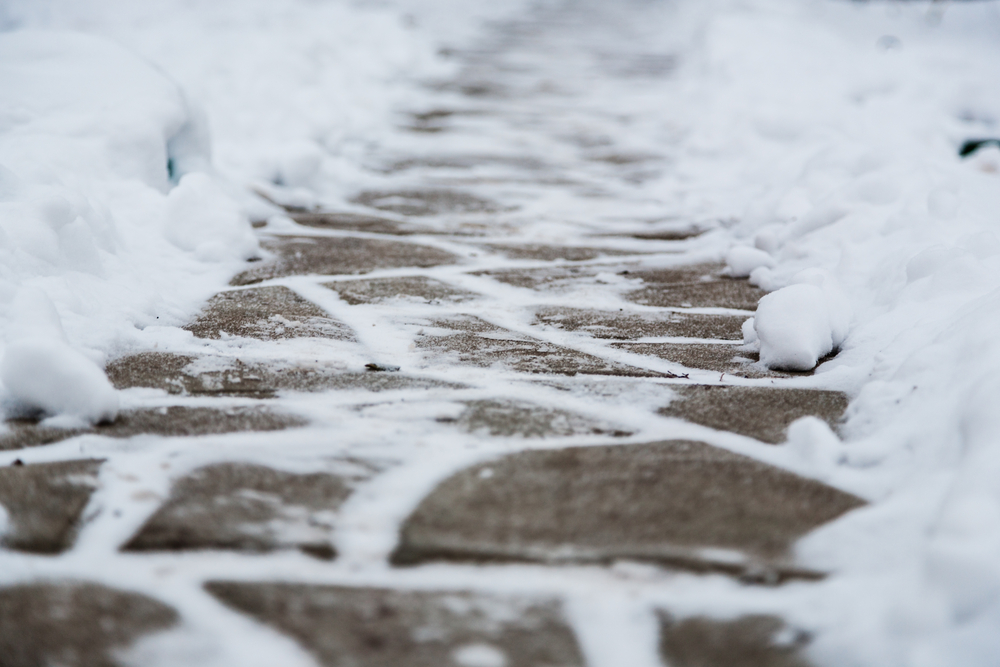
one
two
three


Ready or not, here comes the snow. Are you prepared to deal with de-icing your hardscape? Here are some suggestions we have used to keep things snow and ice-free.

A snow shovel is definitely different from a garden or digging shovel. For one thing, snow shovels are usually lighter and wider, around 18-24 inches. They are designed to do one of three things: scoop the snow, push the snow, or both. You can even get electric snow shovels now (not sure how well they work). A push shovel is better than a scoop shovel for large jobs and large areas. A scoop shovel is better for tight confined areas. Either one may have an ergonomic handle to help prevent back pain when shoveling.
Plastic shovels are lighter but are not good if you have to chip away at hard ice and are more prone to break. Steel shovels are good at hard snow and ice removal and are very durable but may be heavy. Aluminum is stronger than plastic but may bend or break when removing hard ice that requires chipping away. Choose the best shovel you can afford for the type of snow and ice in your area. The Blue Crew likes to use the wider plastic shovels for pushing snow, and we break out our landscape shovels when we need to chip away at heavy ice.

Snow blowers come in several types. Electric snow blowers are capable of clearing light snow. They are commonly used on decks and steps that larger mowers won’t fit on. Electric snow blowers are usually less heavy-duty than other snow blowers and wear out faster. They also throw anything they encounter, including rocks and other debris. However, they are low maintenance and easy to use.
Single-stage snow blowers are gasoline-powered. They scoop up the snow and shoot it out the shoot. In addition to being cheaper than other gasoline-powered blowers, they are smaller and lighter. They can handle up to twelve inches of snow so you might have to clear snow multiple times during a storm. Don’t use them on a rock driveway as they will throw the rocks.
Two-stage snow blowers are more powerful than both electric snow blowers and single-stage snow blowers. They can handle as much as eighteen inches of snow and power through drifts. The snow is picked up by the auger, and then thrown through the shoot. They can be used on concrete and rock driveways. However, they are heavier and more expensive than the first two types of snow blowers.
Three-stage snow blowers are the most powerful walk-behind mowers for consumers. Augers pick up the snow, then it is moved to the middle, where it is chopped and thrown fifty feet out of the shoot. If you have to push through frozen walls of ice the snowplow left behind, you will need a three-stage snow blower. They often feature heated grips, self-propelled wheels, and single-push shoot control.
For those of you with a bigger budget and who like your toys, you can invest in all types of snow-pushing equipment. There are small plows that you can put on the front of a mower or ATV to help clear driveways. We use our bobcats with blades on them to clear snow whenever possible, and of course, you can put a plow on a truck if you really have a lot to clear.
Ice melt can work wonders for helping to clear snow and ice during the winter. Some types of ice melt like old-fashioned salt can cause damage to concrete if left over time. Salt is typically used for asphalt roads and parking lots, but when it is left on your concrete driveway or walkway for too long can cause some serious damage. We prefer to use magnesium chloride or calcium magnesium acetate to help melt ice and snow. These products are less damaging to concrete surfaces. The Blue Crew tends to pre-treat whenever possible. This is the magic secret to making your life easier with it comes to snow. By putting down a thin coating of ice melt prior to the storm, you can usually save yourself some serious work later. The snow at the bottom will not stick as much and helps prevent a bottom layer of ice when shoveling. In some cases, during light snow, the ice melt can really minimize the amount of scraping or shoveling that needs to be done.

While removing snow and ice is important, you need to be careful when doing so on pavers. It is best to avoid de-icing chemicals on pavers. These will strip the seal on the pavers and over time can cause flaking on the top. The flaking will eventually leave dimples on top that collect water, ice, and leaves. Use a snow shovel or snow blower instead. You would hate to ruin your investment in your paver patio or walkway due to too many ice melt treatments.
Take the time now to make sure that you are prepared for the snow this season. Evaluate your hard surface areas and what is a priority for clearing during a storm. Get the right tools for the job and have a game plan. Don’t forget about your guests and the mailman when you clear your property. A snow-covered landscape is such a beautiful sight, and when you have clean and clear surfaces, it makes it even more breathtaking. Best of luck this winter and have a Happy Holiday Season from Royal Creations Architectural Landscaping!